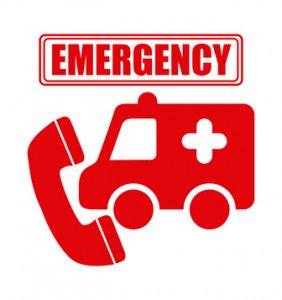
Life alert services ensure fast emergency responses for seniors
Life alert services date back to 1972 when a psychology professor called Dibner came up with an idea of helping the elderly get emergency help even when they could not get to their telephones. Dibner thought that such a device would save many seniors’ lives by getting them the help they need as soon as their distress cry gets to people who can offer help. In 1974, the professor started the process of obtaining a patent. He was awarded the patent in 1976 and is to this day seen as the father of medical alert services in the United States. Life Alert is an established name and you can read Life Alert reviews here on our site.
Personal Emergency Response Services
Through Lifeline Systems, Inc, Dibner made available the medical alert emergency services for seniors. It grew in popularity in the United States as well as in Canada under the name PERS (Personal Emergency Response Services) by giving seniors and their loved ones additional peace of mind for senior safety protection. But it was not until over a decade later when another company introduced Life Alert which became synonymous with all medical emergency alert systems.
Life Alert is a device worn by a senior which is used to communicate emergencies in instances where the senior is unable to use the phone to call for help. Life Alert is a creation of Isaac Shepher. This pendant-shaped gadget can be worn on a wristband or a necklace. It has an automated dialer which is connected to a telephone line. Created in 1987, Life Alert has been helping seniors and handicapped persons when they fall down and are unable to get back up or when there is a break-in and their telephone is not within their reach.
The Life Alert program is a service offered by Life Alert Emergency Response, Inc. The company headquarters are in Encino, California. It has other offices across the country, including in New Jersey, Florida, and New York. In the United States, Life Alert Emergency Response is one of the largest medical alert systems companies, handling over 2 million calls per year. According to the company’s website, the Life Alert service on average saves one person from potential life-threatening dangers every 10 minutes. The company further states that it employees a staff of around 600 people to manage the services nationwide.
Quick Assistance
By simply pressing a button, the senior can get quick personal emergency response assistance. The button on the pendant is designed to activate the automated dialer base station. The company receives the call and, in turn, alerts the authorities who can take the necessary action. The Life Alert program was seen as a way of encouraging the elderly to continue living in their homes instead of moving to retirement homes and assisted living centers. Until his death, Dr. C. Everett Koop popularized Life Alert in commercials that aired from 1992. Dr. Koop was a Surgeon General. In the advertisements, he stated that he wore a Life Alert. He died in 2013.
Most seniors in the United States are well acquainted with the Life Alert brand, largely because of the company’s advertisements spanning over two decades. The ads were extremely successful, with their ad slogan getting prime time mentions by celebrities on mainstream media. The memorable slogan was ‘I’ve fallen and I can’t get up”. The Life Alert service has helped the elderly to live at home independently without feeling that if they got into trouble there would be no one to help them.
Other life alert system providers, like Alert1 Medical Alert and Connect America medical alert, have emerged in recent years. These include companies like Alert1, Bay Alarm Medical, Connect America, LifeStation, Medical Guardian and Costco MediPendant, to name a few. Philips’ Lifeline is the largest medical alert company in the United States with over 7 million subscribers.
Medical alert system providers nowadays offer a variety of services such as medical monitoring with automatic fall detection. Monthly service costs have dropped since emergency response systems were first introduced to the market and response times have improved. If you were ever on the fence about having an in-home medical alert system, read Who Would Benefit From a Medical Alert System for a great list of reasons why having a medical alert system is an excellent idea! You may also want to check-out How to Become a Tech Savvy Senior to see how computers, smartphones, and medical alert devices can all work together.


